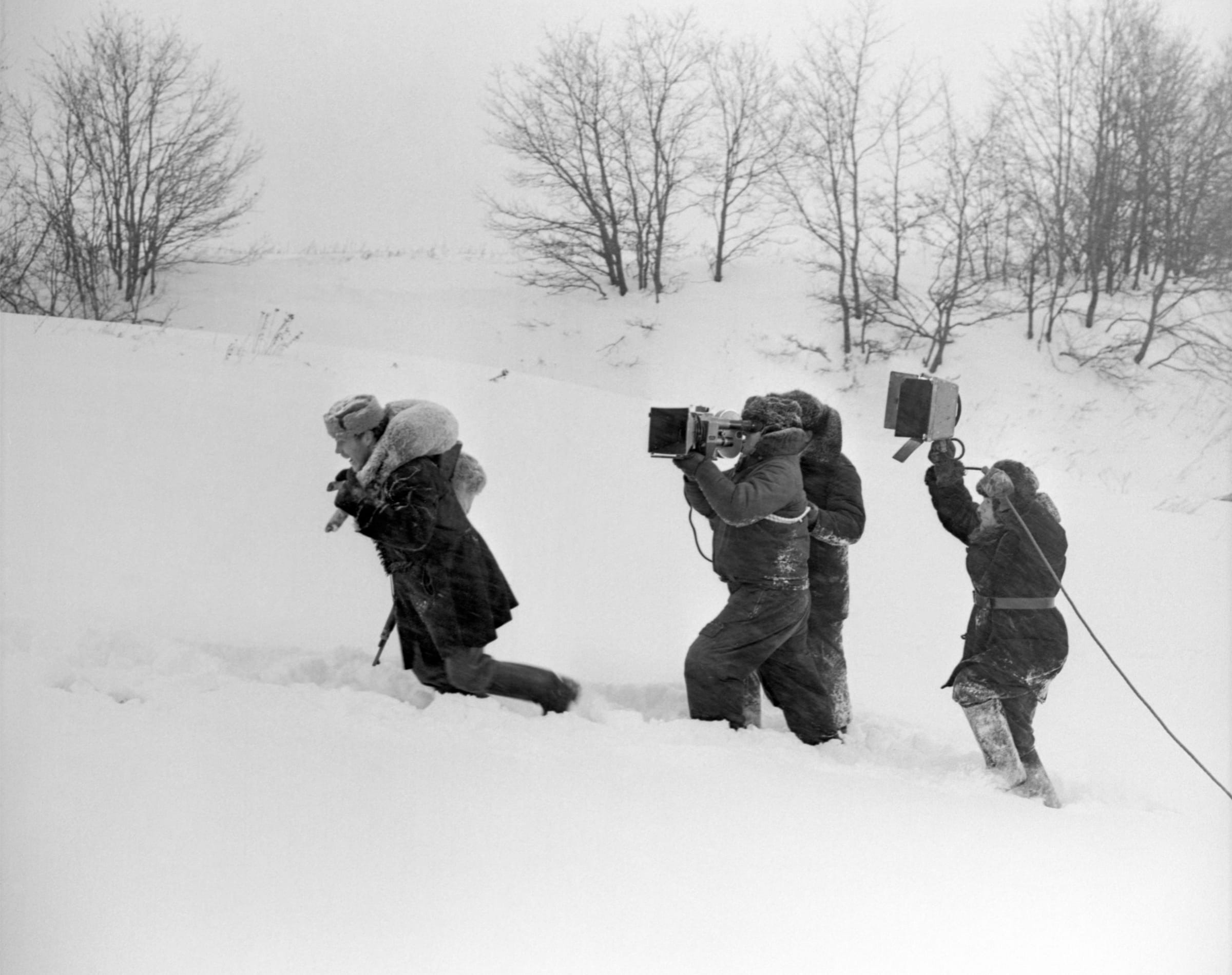Rybak, the tougher of the two, knows their whereabouts, and Sotnikov, the weaker one, follows him. They go to a house Rybak fondly remembers for the woman in it and a night he spent with her. It is now ashes, ruin, the bed broken in the rubble. Rybak is a tender man who loves life as something under his control. Sotnikov is afraid of the world. Together they eat dried raspberries out of the cups of their hands.
They walk on through the ever-deepening snow toward other houses. At one, they encounter an old man who has sold out to the Nazis—a visit after which Sotnikov is wounded in the leg by gunfire. At the next, they break in and find three hungry children waiting for their mother to come home. She does. She is rough and hostile but allows the two partisans to hide in her attic when they hear Germans coming with shouts and guns. The Nazis’ brutal occupation of the house takes place swiftly, outrageously, and the mother is dragged from her children, thrown onto a sleigh along with the two soldiers and taken to a German-held barracks. The cries of the children fade into the distance.
“I see in The Ascent Shepitko’s relentless search for the source of evil, as well as for the glimmers of divine reality that have not yet been annihilated.”
At their final stopping place, Sotnikov and Rybak are put before a local collaborator with the Germans, a military bureaucrat who wears the obscene smile of a sadist. He focuses his attention on Sotnikov, who refuses to cooperate. Rybak, by contrast, will say anything to save his own skin. Surgical tools are brought in for use on Sotnikov, and this familiar scene of torture conjures up the death of every victim who has so far transcended the pattern of history to remain innocent.
I see in The Ascent Shepitko’s relentless search for the source of evil, as well as for the glimmers of divine reality that have not yet been annihilated. I imagine her beside her huge filmmaking instruments, seeking to find meaning in bodies and faces, and in the environment surrounding them—a drive to confront humanity in all its complexity. Rybak’s uncalculated kindness in trying to keep his companion alive is balanced by his fury and heartbreak after he himself attempts suicide and fails; he comes to resemble one of Ingmar Bergman’s lovable but tragically foolish men. In The Ascent, Shepitko is seeing from the point of astonishment, and the camera is her instrument that asks: What is going on? She uses it to uncover the existential woe common to the moral confusion of wartime.
Eventually, Sotnikov and Rybak are dragged to a dark cellar and left there. Three other prisoners—the old man and the mother from earlier, and a young Jewish girl—follow, and in this black hole all five acquire uncannily familiar features, since they evoke pictures we have seen. I think of Rembrandt’s darkened biblical figures, their blurred features, and the stills of the camps on the day of liberation—faces shaded and eyes filled with bitter hope. Shepitko sees and films her characters, their faces especially, as replications in a tradition of religious paintings, icons, wonder tales, and poetry.




